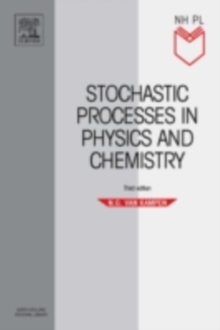
Lectures on Ion-Atom Collisions : From Nonrelativistic to Relativistic Velocities PDF
by Jorg Eichler
Part of the North-Holland Personal Library series
Description
Atomic collisions offer some unique opportunities to study atomic structure and reaction mechanisms in experiment and theory, especially for projectiles of high atomic number provided by modern accelerators. The book is meant as an introduction into the field and provides some basic theoretical understanding of the atomic processes occurring when a projectile hits another atom. It also furnishes the tools for a mathematical description, however, without going deeper into the technical details, which can be found in the literature given. With this aim, the focus is on reactions, in which only a single active electron participates. Collisional excitation, ionization and charge transfer are discussed for collision velocities ranging from slow to comparable to the
speed of light. For the highest projectile velocities, energy can be converted into mass, so that electron-positron pairs are created. In addition to the systematic treatment, a theoretical section specializes on electron-electron
correlations and three chapters are devoted to selected highlights bordering to surface science and to physics with antiprotons.
* Simple access to the theory of collisions between ions and atoms
* Systematic treatment of basic features needed for an understanding
* Mathematical details are omitted and referred to references
* In order to bear out the essential ideas most clearly, a single active electron is assumed in most cases
* In selected examples, theoretical results are confronted with experiment
* Discussion supported by a large number of illustrations
* Selected highlights in borderline fields are presented
Information
-
Download - Immediately Available
- Format:PDF
- Pages:272 pages
- Publisher:Elsevier Science
- Publication Date:23/09/2005
- Category:
- ISBN:9780080461113
Information
-
Download - Immediately Available
- Format:PDF
- Pages:272 pages
- Publisher:Elsevier Science
- Publication Date:23/09/2005
- Category:
- ISBN:9780080461113










